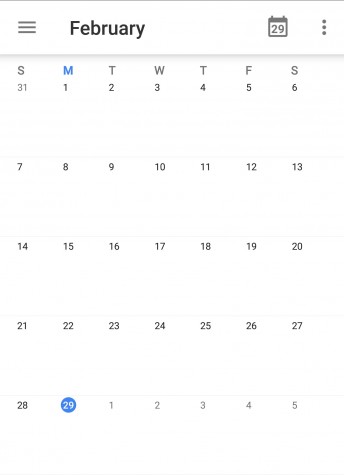Leap year brings cultural traditions and extra 24 hours
February 29, 2016
 A Leap year occurs every four years to keep the calendar in alignment with the Earth’s revolution around the sun. Unlike what most think, it does not take exactly 365 days for Earth to complete its travel around our system’s star; instead, it takes precisely 365 days, 5 hours, 48 minutes and 45 seconds. For this reason, one more day needs to be added to our calendar every four years in order to catch up. This confusing date created many original customs all around the world over time.
A Leap year occurs every four years to keep the calendar in alignment with the Earth’s revolution around the sun. Unlike what most think, it does not take exactly 365 days for Earth to complete its travel around our system’s star; instead, it takes precisely 365 days, 5 hours, 48 minutes and 45 seconds. For this reason, one more day needs to be added to our calendar every four years in order to catch up. This confusing date created many original customs all around the world over time.
In some cultures, Feb. 29 is know as bringing the bad luck like Friday the 13 does. In Scotland, people born on Leap day are considered unlucky for the rest of their life. While in Greece, you will be unlucky in love if you get married on a leap year, especially if it is on Leap Day. However, one Irish tradition illustrates feminine power and was the beginning of women’s rights.
According to a tradition that originated in Ireland around the 5th century and spread over Europe, Feb. 29 was the only day women were allowed to propose to the man of their dreams. The legend says it is St. Bridget who made this deal with St. Patrick so that she could surprise him into asking him to marry her. Unfortunately, and despite this romantic act, St. Patrick refused but gave her a kiss and a silk gown in consolation. Following the creation of this legend, a law in some European countries such as Scotland demanded that any man who refused a woman’s proposal on Leap Day was to buy her 12 pairs of gloves so she could hide her shame of having a naked engagement finger.
“When it’s not a leap year, I celebrate my birthday on Feb 28 and March 1 because some people remember it on one day and others remember it the next day,” english teacher Kim Adas said. “I’ve always enjoyed having a birthday on leap day because I feel unique and everybody remember it, but I was confused when I was a kid because I couldn’t see my birthday on the calendar.”
In the United States, Feb. 29 is Sadie Hawkins’ Day as well as Leap day. Similar to the Irish tradition, dances were organized to celebrate this day. From this, the annual high school dance named Sadie’s appeared. This is why girls ask boys on a date to the dance.
Not only traditions but people are born every four years on Leap Day. Those special people, called leapings, do not have the opportunity to celebrate their birth on their actual birthday every year and so need to schedule it on a different date, which can be confusing, or even frustrating, especially for a child.
Good luck or bad luck, Feb. 29 will always be an interesting date. “My students were excited to learn they were older than I am since technically, I am only 14,” Adas said.







